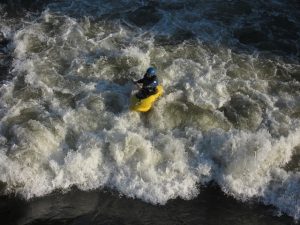The growing popularity of inflatable kayaks for two reflects a demand for durable, puncture-resistant fabrics in outdoor recreation gear, driven by trends towards accessible and eco-friendly water sports. Advanced fabric technologies enable manufacturers to produce high-quality inflatable kayaks offering superior performance and safety. Selecting the right fabric involves balancing durability, puncture resistance, and breathability, with HDPE, reinforced nylon, HDPVC, and sturdy nylon fabrics like 1000D or 300D denier being popular choices. Rigorous testing methods ensure fabric strength and longevity against sharp objects and friction. Advanced manufacturing techniques and reinforcements, including double layers, extra stitching, and heat-welded joints, enhance puncture resistance and maintain buoyancy, making inflatable kayaks for two suitable for diverse environments and adventures. Prioritizing durability and puncture resistance ensures safety and the long-term use of these watercraft.
“Discover the secret to a seamless paddling experience with durable, puncture-resistant fabric in inflatable kayaks. As demand soars for these versatile watercraft, understanding the key attributes of robust materials becomes essential. This comprehensive guide explores modern kayak construction, testing methods, and reinforcement techniques. Learn how to choose the perfect fabric for your next adventure, whether cruising calm waters or tackling thrilling rapids with an inflatable kayak designed for two.”
Understanding the Demand for Inflatable Kayaks
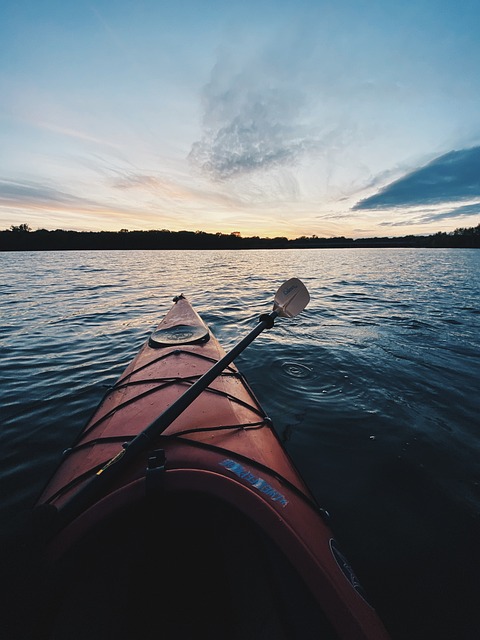
In recent years, there’s been a growing demand for durable and puncture-resistant fabrics, particularly in outdoor recreation gear like inflatable kayaks. The popularity of inflatable kayaks for two has surged due to their portability, ease of setup, and versatility—perfect for casual paddlers and adventurous couples alike. This trend reflects a shift towards accessible and eco-friendly water sports, where convenience and sustainability are at the forefront of consumer choices.
The need for robust materials in inflatable kayaks is evident as users seek products that can withstand varying water conditions and outdoor elements without compromising safety or performance. With advancements in fabric technology, manufacturers now offer high-quality inflatable kayaks equipped with innovative puncture-resistant fabrics, ensuring a seamless and enjoyable paddling experience for enthusiasts exploring lakes, rivers, and coastal waters.
Key Attributes of Durable Puncture-Resistant Fabric
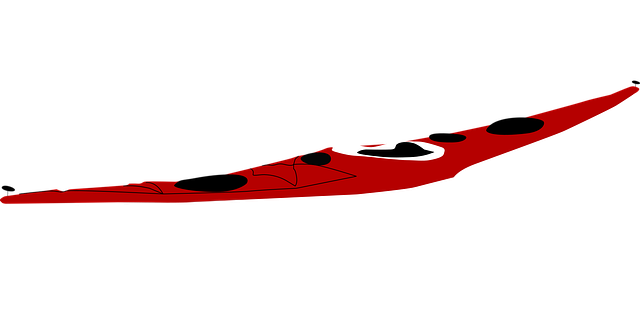
When it comes to selecting a durable, puncture-resistant fabric for an inflatable kayak for two, several key attributes come into play. Firstly, look for materials that offer exceptional tear strength and high puncture resistance, ensuring your kayak can withstand accidental sharp objects or rough water conditions without damaging the fabric. The best options often include high-density polyethylene (HDPE) or reinforced nylon fabrics, known for their robust construction.
Additionally, breathability is a crucial factor. While you want the fabric to resist punctures, it should also allow air to circulate, preventing excessive heat buildup inside the kayak during prolonged use. This feature enhances comfort and ensures a more enjoyable paddling experience, especially during longer trips. Some manufacturers incorporate specialized coatings or laminates that provide water resistance while maintaining breathability.
Materials Used in Modern Kayak Construction
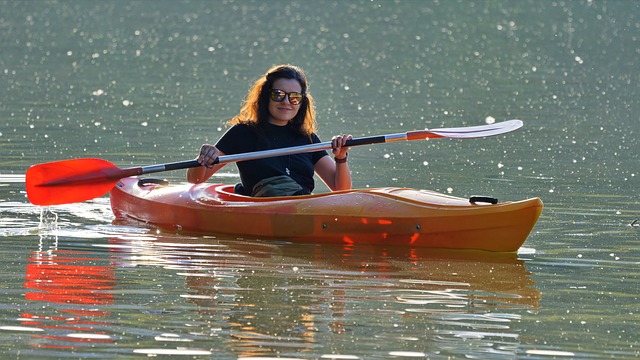
Modern kayak construction leverages a variety of materials, each offering unique advantages in crafting durable and puncture-resistant boats, especially for popular options like inflatable kayaks for two. One prominent material is high-density polyvinyl chloride (HDPVC), renowned for its exceptional strength-to-weight ratio and resistance to both punctures and UV degradation. This makes it ideal for inflatable sections, ensuring longevity even with frequent use and exposure to sunlight.
Another commonly used fabric is nylon, particularly in the form of 1000D or 300D denier. These types of nylon fabrics offer superior tear strength and durability, making them suitable for key areas prone to wear and tear, such as the hull’s exterior and critical seams. When combined with advanced manufacturing techniques like heat-welding, these materials create a robust structure capable of withstanding the rigors of water exploration, especially during adventurous trips involving an inflatable kayak for two.
Testing Methods for Evaluating Fabric Durability
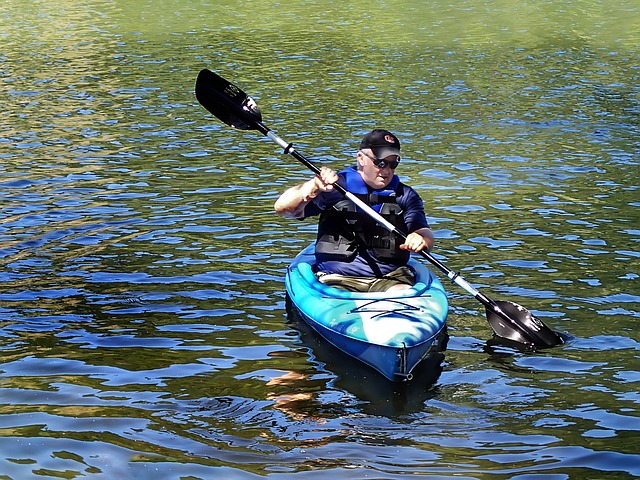
Evaluating the durability of a fabric, especially for outdoor gear like an inflatable kayak for two, involves rigorous testing methods. One common approach is the puncture resistance test, where a standardized needle or sharp object is used to pierce the material and measure its strength. This test simulates real-world scenarios, such as a kayaker stepping on their fabric or encountering sharp objects in the water. The results provide insights into how well the fabric can withstand such challenges without tearing or puncturing.
Another critical method is the abrasion resistance test, which assesses how well the fabric holds up against friction and wear. This is particularly relevant for inflatable kayaks as they often come into contact with rough surfaces, rocks, and other obstacles during use. The testing involves rubbing samples of the fabric against abrasive materials under controlled conditions to simulate prolonged use. These tests help manufacturers and consumers understand the fabric’s longevity and ability to resist degradation over time, ensuring a reliable and safe paddling experience for users, such as those enjoying an inflatable kayak for two in diverse environments.
Incorporating Reinforcements and Sealing Techniques
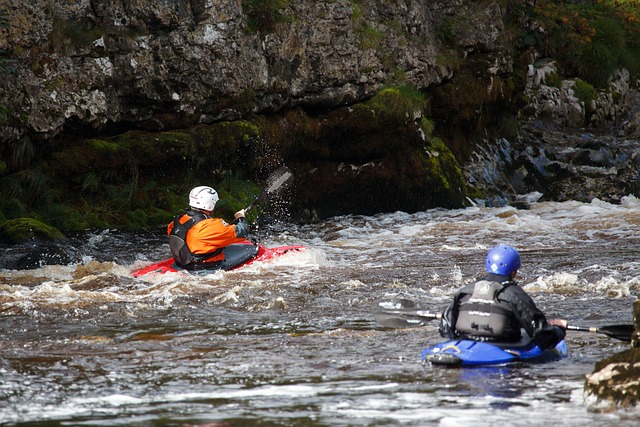
Inflatable kayaks, designed for outdoor adventures, often face diverse and demanding conditions. To ensure their longevity, especially when used in water sports like kayaking for two, incorporating reinforcements and sealing techniques is paramount. High-quality materials such as durable PVC or nylon fabrics, reinforced with double layers and extra stitching, significantly enhance puncture resistance.
These reinforcement strategies are particularly crucial in areas prone to strain, like the kayak’s hull and seams. Advanced sealing techniques, employing specialized adhesives and heat-welded joints, create airtight connections, preventing water ingress and maintaining buoyancy. This meticulous approach not only prolongs the lifespan of inflatable kayaks but also enhances their performance during extended voyages or intense activities, ensuring a seamless experience for kayakers, even in challenging environments.
Choosing the Right Fabric for Your Inflatable Kayak Needs
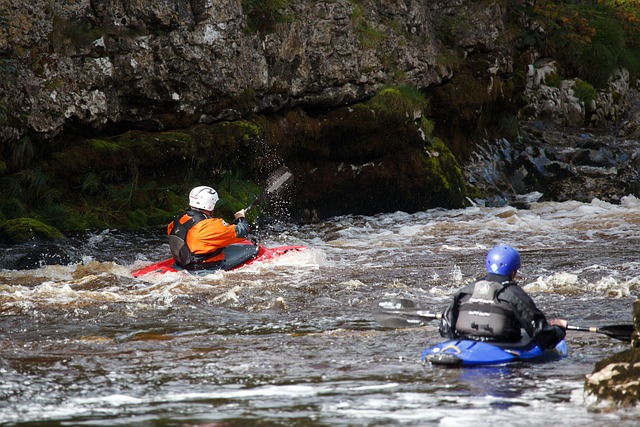
When selecting a fabric for your inflatable kayak, consider its durability and resistance to punctures, especially if you plan to use it for a two-person inflatable kayak. Look for materials that offer superior strength and protection against sharp objects, such as rocks or branches.
Opting for a durable, puncture-resistant fabric ensures the safety and longevity of your watercraft. This is particularly important when venturing into open waters or navigating through potential hazards, ensuring a smooth and secure paddling experience for both occupants.
